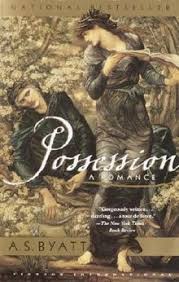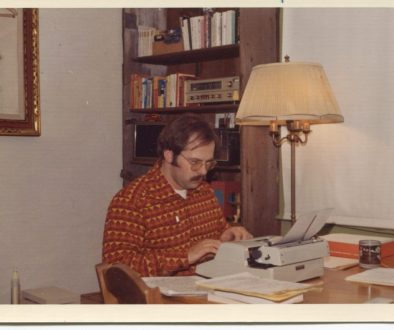Listen . . .
Do you “hear” the voices of characters when you’re reading a novel? Do you begin to imagine what characters look like, perhaps even making some assumptions about their personality and values? Do you feel their emotions, from joy to anguish? In other words, do you let your imagination bring the story’s characters to life?
I suppose it goes without saying that I do. Oh geez, do I ever. I laugh at their folly, I cringe when they’re in danger. I’ve been known to get a quivering chin and a tear in my eye when things don’t go well. (No, I won’t tell you about the time I sat on a train, sobbing out loud, over the ending of A.S. Byatt’s Possession . . . OK, guess I just did.)

All this brings to mind the audiobook. Do we get into the characters, feel what they’re feeling, in the same way we do when we read the book? I think it depends on how skillfully the book is narrated. By skillfully I mean, is the voiceover artist intellectually and emotionally invested? Needless to say, these characteristics, these qualities, vary greatly.
I listen to a lot of Audible books. Maybe not quite as many as I read (full disclosure: I read a book about every ten days, some but not all of which I review here in The Saturday Review), but still quite a few. Listening to what were once called “books on tape” is what I do when I’m working in the garage, mowing the lawn, doing household chores. Oh, how I love stories well told.

I’ve also been active in getting my own novels and novellas produced in audio. I’m fortunate to have trusted, intelligent, talented, dependable people whom I hire to narrate and produce my books. My first audiobook was also my first published novel, Wild Blue Yonder, back in 2011. Although it doesn’t seem like such a long time ago, audiobooks a decade ago were mostly single-voice narrations. Today, audio – both in podcasts and books – has followed the movies’ lead in using multiple voiceover actors to perform the various roles. My team and I are doing a new recording of WBY because I published a revised edition and I wanted a full cast to tell the story of the fifteen-odd characters.
I had a point to make when I began writing this, from which I’ve digressed but hopefully have not bored you. My point is this: even when an audiobook has a single narrator – in fact, particularly so – it soon becomes apparent whether or not the narrator is emotionally and thoughtfully invested in the story. Pleasure and pain must be expressed. The sense of the lead character’s attitudes toward life must be expressed. When there is rising action, the narrator’s own emotions and tone of voice must rise up to invoke it. When there is a loss, that must be conveyed to the listener as well.
I remember one audiobook in which the lead male character and the lead female character had fallen deeply in love, but he has led her into a situation with grave dangers. I felt their love for one another so deeply, so personally, that I worried from one chapter to the next that she would be kidnapped, hurt, perhaps even killed. The dramatic tension was incredible! I even found myself getting angry at the male character, thinking what I’d do to him if she died. Fortunately for all concerned, she did not.
A parting thought: based on what I’ve learned about voiceover recording from several actors and my own experiences (both successes and failures), the voiceover artist simply must read the entire book before ever beginning to record. And with that overall textual familiarity established, the good ones will re-read the chapters at least once before they begin a recording session. If you ever listen to an audiobook where the narrator’s vocal inflections are flat as a pancake, or if they stumble or mispronounce, it’s likely they did not read the book in advance.
Next week I’ll review a seven-novel series, all narrated by the same voiceover actor, and in the review tell you what a great job he did.




